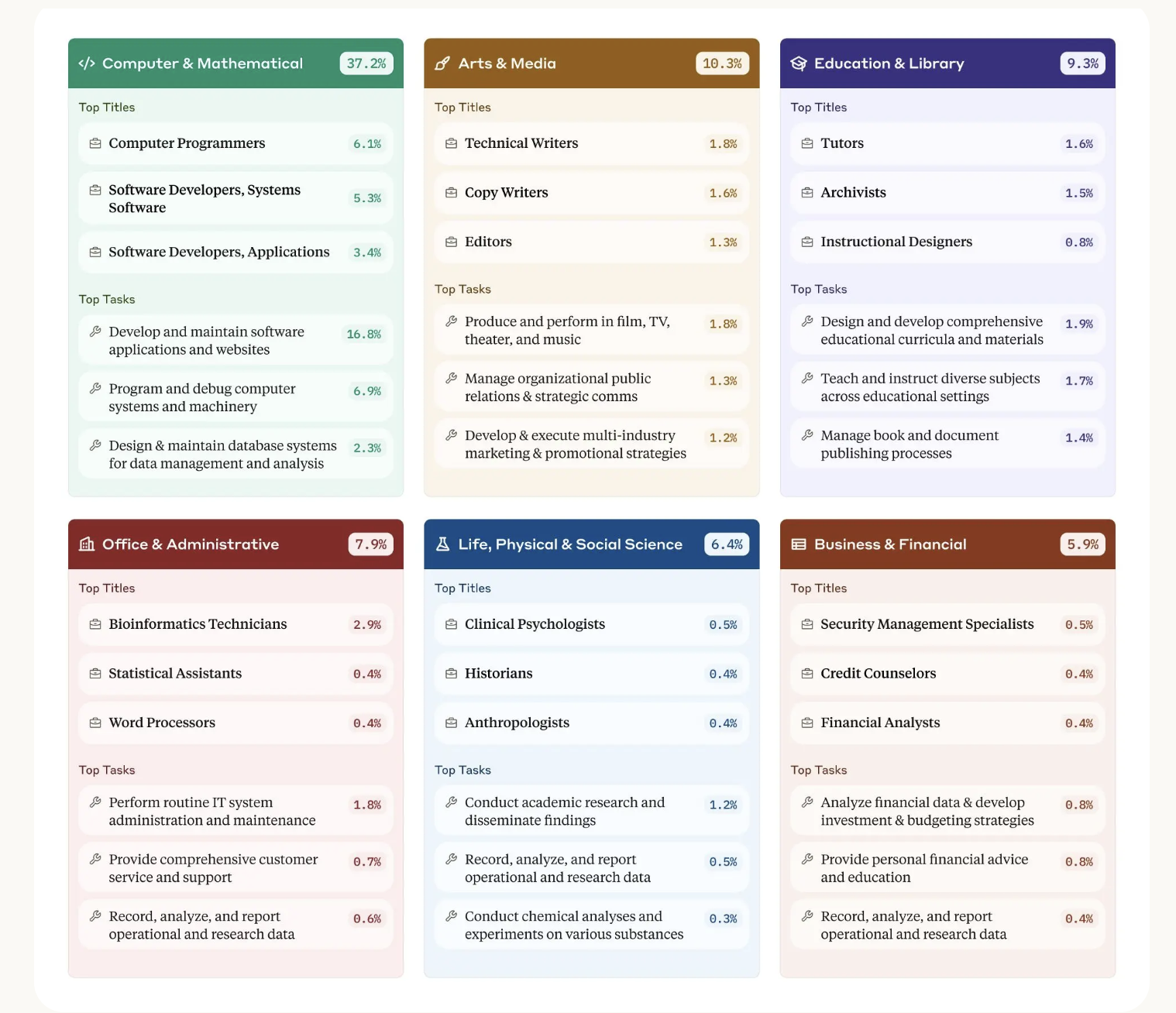
Understanding AI’s Role in the Economy
Artificial Intelligence (AI) is becoming a key player in many industries, but there’s a lack of solid evidence about how it’s actually being applied. Traditional research methods, like surveys and predictive modeling, often fall short in capturing how AI is changing work environments. To truly understand AI’s impact on productivity and the economy, we need a data-driven approach.
Introducing the Anthropic Economic Index
A new initiative by Anthropic AI, the Anthropic Economic Index, aims to track AI’s influence on economic activities. The first report analyzes millions of anonymized conversations from Claude users and maps AI usage in various job categories, using data from the U.S. Department of Labor. Key findings show:
- AI is mainly used in software development and writing, with these areas making up nearly half of all AI interactions.
- 36% of jobs utilize AI for at least a quarter of their tasks, highlighting its growing presence.
Technical Approach and Key Benefits
The Anthropic Economic Index uses Clio, a privacy-focused tool, to analyze over four million conversations from Claude.ai users. This approach categorizes AI interactions to reveal patterns in adoption, with notable insights including:
- AI is heavily utilized in software engineering and content creation.
- 4% of professions use AI for over 75% of their tasks.
- Cognitive tasks dominate AI interactions, while physical and managerial tasks see less engagement.
- AI is more common in mid-to-high wage jobs, especially in technology.
This method allows for continuous tracking of AI’s economic role, helping businesses and policymakers understand its impact on the workforce.
Key Insights and Patterns
The study distinguishes between AI augmentation (enhancing human capabilities) and automation (AI performing tasks independently). Key findings reveal:
- 57% of AI interactions are augmentation-based, like refining ideas or drafting content.
- Software development and data science account for 37.2% of AI conversations.
- Jobs requiring physical labor show lower AI adoption.
- AI is most prevalent in jobs needing a bachelor’s degree, particularly in fields requiring substantial preparation.
Conclusion
The Anthropic Economic Index offers a clear way to assess AI’s impact on various professions. While adoption is increasing, its role varies across fields—enhancing some jobs while automating others. This data-driven perspective helps facilitate informed discussions about the future of work and the ongoing evolution of AI’s economic influence.
For more details, check out the Paper and Technical Details. Credit goes to the dedicated researchers behind this project. Follow us on Twitter and join our 75k+ ML SubReddit for continuous updates.
Enhancing Your Business with AI
If you’re looking to leverage AI in your company, consider these practical steps:
- Identify Automation Opportunities: Find customer interaction points that could benefit from AI.
- Define KPIs: Ensure your AI efforts have measurable impacts on your business.
- Select an AI Solution: Choose tools that fit your needs and allow for customization.
- Implement Gradually: Start with a pilot project, collect data, and expand your AI use wisely.
For advice on managing AI KPIs, reach out to us at hello@itinai.com. Stay updated on AI insights by following us on Telegram at t.me/itinainews or Twitter at @itinaicom.
Discover how AI can transform your sales processes and customer engagement by visiting itinai.com.

























